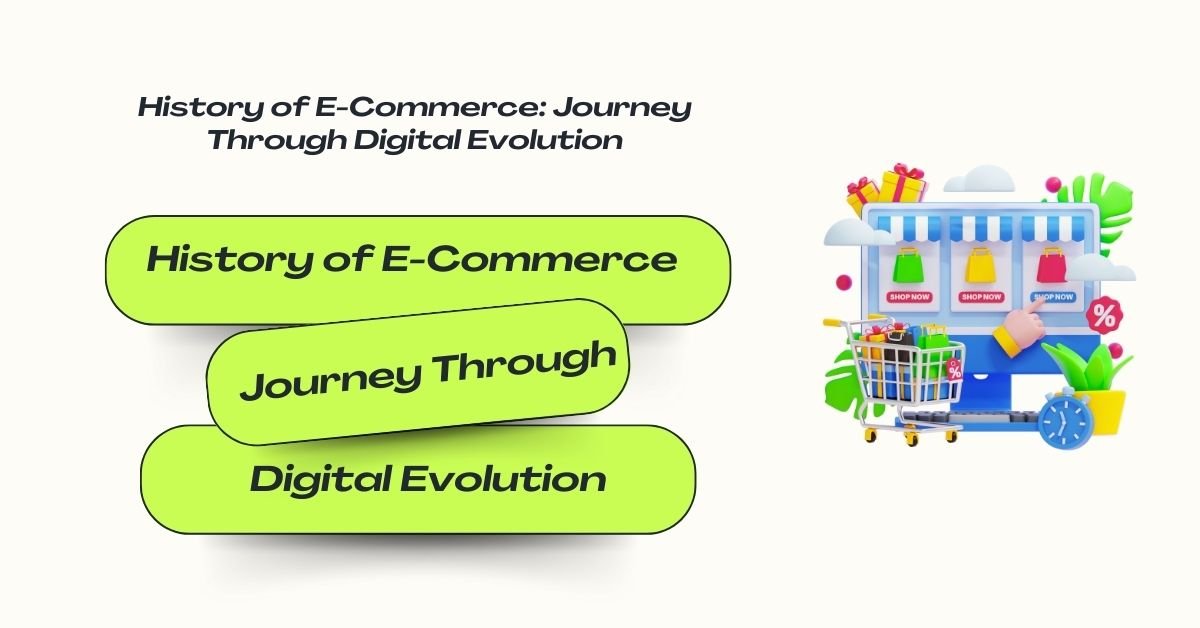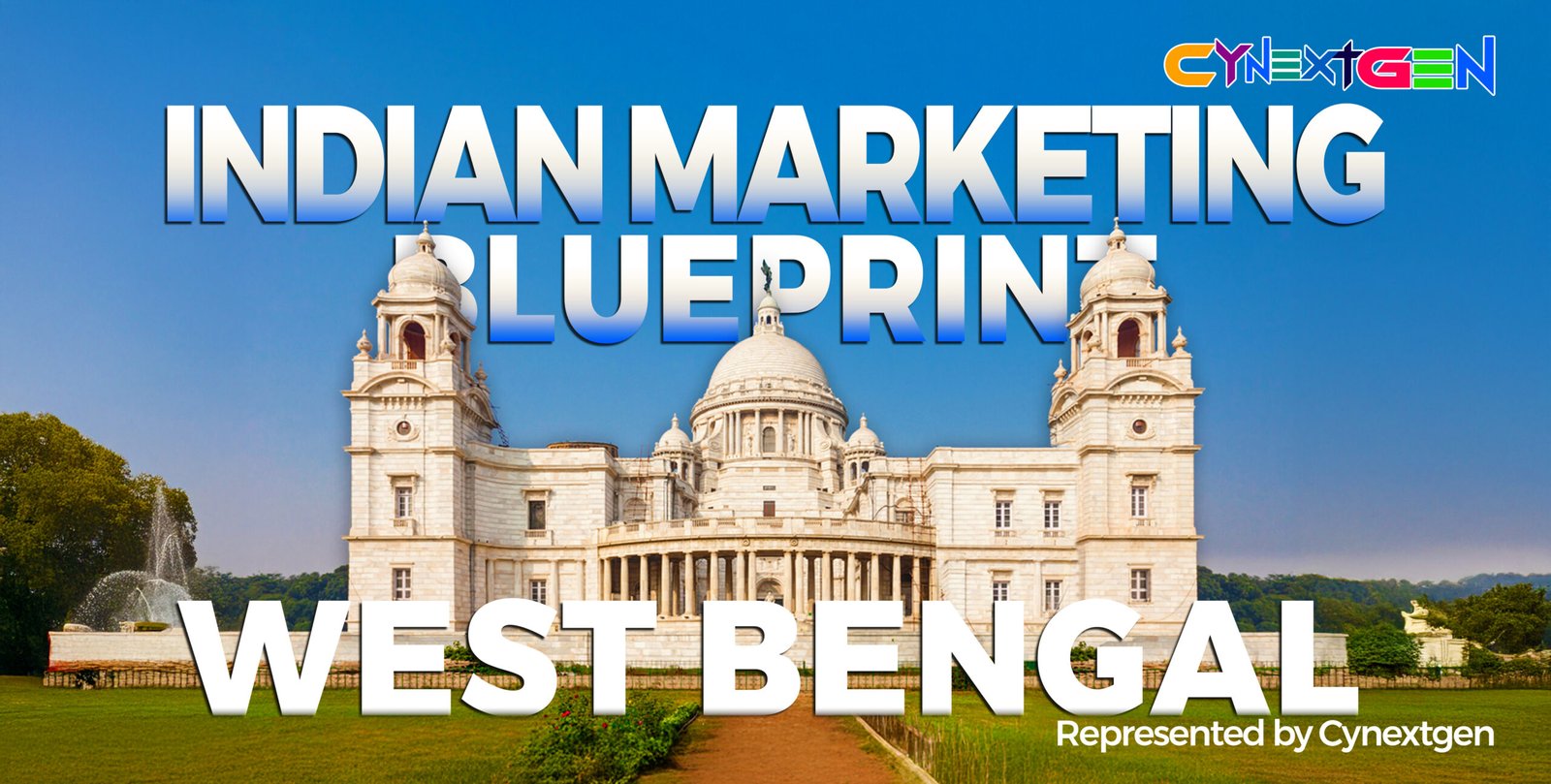
The History of E-Commerce: Journey Through Digital Evolution
Last updated on August 29th, 2025 at 09:54 am
E-commerce, the backbone of today’s digital shopping experience, has drastically reshaped how people buy and sell goods globally. While online shopping now feels second nature, its origins trace back decades, evolving through constant innovation and shifts in consumer behaviour. Understanding the history of e-commerce offers valuable insights into how this industry became a cornerstone of the modern economy.
How Did Online Trade Begin in the Early Days of E-Commerce?
Businesses began playing with electronic data exchange (EDI) in the 1960s, which was when e-commerce first developed. This technology enabled companies to exchange invoices and orders digitally, rather than relying on paper documents.
By the 1970s, ARPANET, the network that eventually led to the internet, enabled the first digital transactions. In 1979, English inventor Michael Aldrich introduced a system that connected a television set to a computer via a phone line, allowing people to shop from home. Though primitive, it showed the world what digital shopping could become.
The real breakthrough occurred in the 1990s with the widespread adoption of the internet and the launch of the first online stores. Secure Sockets Layer (SSL) encryption was introduced, ensuring safe payments and giving users confidence to shop online. Companies like Amazon and eBay, founded in the mid-1990s, transformed this early idea into a global phenomenon.
The Rise of Online Marketplaces in the 1990s
The advent of the internet in the early 1990s revolutionized commerce. Businesses quickly recognized the potential of this new digital medium. The first genuine online sale occurred in 1994, when a CD by the artist Sting was sold via Net Market, marking a landmark event in e-commerce history.
Companies like Amazon, founded by Jeff Bezos in 1994, initially started as online bookstores. Simultaneously, Pierre Omidyar established eBay in 1995, creating the first peer-to-peer marketplace, allowing everyday people to buy and sell directly with each other. This era marked the rapid rise of online marketplaces, laying the groundwork for future e-commerce models.
Dot-Com Era a Turning Point in the History of E-Commerce?
The dot-com era of the late 1990s and early 2000s marked one of the most defining moments in the history of e-commerce. During this period, the internet transitioned from a niche tool to a mainstream platform for both businesses and consumers. Thousands of startups emerged, each aiming to capitalize on the potential of online trade. Companies like Amazon and eBay proliferated, setting the blueprint for today’s global e-commerce giants. While many businesses failed during the dot-com crash, the lessons learned reshaped online retail forever. It highlighted the importance of scalability, trust, and innovation in sustaining growth.
How Did E-Commerce Expand Rapidly During the 2000s?
The 2000s marked a turning point in the history of e-commerce. This decade transformed online shopping from a niche concept into a mainstream global industry. Several key factors fueled its explosive growth:
- Improved Internet Access: Widespread broadband replaced slow dial-up connections, making online shopping faster and more reliable. More households gained internet access, which directly boosted digital transactions.
- Rise of Online Marketplaces: Platforms like Amazon and eBay expanded globally, offering a wide range of products, from books to electronics. Their success encouraged numerous entrepreneurs to establish online stores, fueling the growth of e-commerce.
- Secure Online Payments: The introduction of PayPal and the improvement of SSL encryption helped build trust in digital payments. Shoppers felt safer entering their credit card details online, which helped transactions skyrocket.
- Dot-Com Recovery and Investment: Following the crash in the late 1990s, the early 2000s witnessed a renewed surge in investor confidence. Venture capital funded innovative startups, many of which became leading players in the online retail industry.
- Global Logistics Networks: Companies improved supply chains and last-mile delivery. Faster shipping options, such as “same-day” or “two-day delivery,” set new standards for customer expectations.
- Digital Marketing Boom: Search engine optimization, email marketing, and paid advertising provided businesses with cost-effective ways to reach broader audiences. These methods proved more measurable than traditional advertising.
Mobile Technology Growth: While smartphones were still emerging, early mobile internet usage began shaping future shopping habits. Customers could browse and shop on the go, hinting at the mobile-first future.
The 2000s marked a monumental shift in the way businesses and consumers interacted, thanks to the explosive growth of e-commerce. During this period, the world saw a rapid acceleration in online shopping, driven by advancements in technology, changing consumer behaviors, and the expansion of internet access. Here, we’ll take a closer look at the key developments that contributed to the rise of e-commerce during the 2000s.
1. The Expansion of Internet Access
At the start of the 2000s, internet usage was already growing, but the decade saw widespread adoption. Broadband internet became more affordable and accessible to consumers, creating a more stable and faster online experience. This was crucial because e-commerce heavily relies on stable internet access for browsing, payment processing, and transaction security.
By 2005, a significant portion of the global population was online, and the transition from dial-up to broadband in many homes and businesses helped create an ideal environment for e-commerce to thrive. The speed and efficiency of broadband allowed for more interactive and visually appealing websites, which helped businesses improve their online storefronts.
2. The Rise of Online Marketplaces
In the early 2000s, several key online marketplaces emerged that would shape the landscape of e-commerce for years to come. These platforms allowed consumers to easily compare prices, read reviews, and make purchases from a wide range of sellers, effectively transforming the shopping experience.
- Amazon: Already established as an online bookstore, Amazon transitioned into a full-fledged e-commerce giant. By the mid-2000s, Amazon had expanded its inventory to include everything from electronics to apparel. Its business model of offering low prices, convenience, and fast delivery solidified its position as a leader in the e-commerce sector.
- eBay: eBay was another major player that defined e-commerce in the 2000s. Known for its online auctions, eBay gave individuals and small businesses the opportunity to reach a global audience, making it one of the earliest and most successful online marketplace platforms.
- Other Marketplaces: Sites like Etsy (founded in 2005) targeted niche audiences interested in handmade and vintage goods. Similarly, platforms like Newegg (2001) focused on electronics and gadgets, carving out a specialized e-commerce space.
These online marketplaces also helped create the foundation for third-party sellers, who could now sell their products without needing their own e-commerce website, broadening the scope of digital commerce.
3. Payment Systems and Online Security Improvements
One of the most significant barriers to e-commerce in the early years was the concern over online payment security. Consumers were reluctant to enter their credit card information online due to fears of fraud or identity theft. However, the 2000s saw significant advancements in payment systems and encryption technologies, which greatly enhanced trust in e-commerce.
- PayPal: One of the biggest breakthroughs in online payments came from PayPal, which revolutionized how people paid for goods and services online. Founded in 1998, PayPal became widely popular in the early 2000s, offering a secure, easy-to-use payment system that was integrated into many e-commerce platforms.
- SSL Encryption: Secure Socket Layer (SSL) encryption, which ensures secure communication between a user’s browser and the e-commerce website, became more widely adopted in the 2000s. Websites with SSL encryption ensured that consumer data, including payment details, was protected, leading to a rise in consumer confidence.
- Credit Card Companies and Security: Major credit card companies like Visa, MasterCard, and American Express also rolled out their own fraud detection systems, which helped to further mitigate online payment risks.
Together, these payment innovations laid the foundation for secure transactions, encouraging both consumers and businesses to embrace e-commerce as a legitimate and safe way to shop and sell.
4. Social Media and Online Marketing
By the mid-to-late 2000s, social media platforms like Facebook, Twitter, and YouTube began to emerge and change how businesses connected with consumers. These platforms introduced new ways to market products, allowing businesses to target audiences more effectively and engage with them on a personal level.
- Facebook (2004): Although Facebook was initially a college networking platform, it quickly grew into a global social network by the late 2000s. Businesses began using Facebook to build brand awareness, engage with customers, and even drive traffic to their e-commerce websites.
- Google Ads: Google introduced its Pay-Per-Click (PPC) advertising model in the early 2000s, which allowed businesses to place ads on Google search results pages and other partner sites. By 2005, Google AdWords had become one of the most widely used advertising tools, helping companies drive targeted traffic to their websites.
- Video Marketing: YouTube, founded in 2005, became a vital tool for e-commerce businesses. Brands could create product videos, demos, or advertisements and reach a large audience. In fact, video content grew rapidly during the 2000s, with businesses using it as a form of interactive marketing to showcase their products in action.
These social media platforms and online advertising tools allowed businesses to create personalized campaigns, engage with consumers in real time, and directly drive traffic to their e-commerce sites.
5. Mobile Commerce and the Rise of Smartphones
Towards the end of the 2000s, the rise of smartphones, particularly the launch of the iPhone in 2007, ushered in the era of mobile commerce, or m-commerce. With smartphones becoming ubiquitous, consumers were now able to shop online from virtually anywhere at any time.
- Mobile Shopping Apps: In the late 2000s, retailers like Amazon, eBay, and Walmart launched mobile apps, making it even easier for customers to browse and shop for products. These apps allowed users to complete purchases directly from their phones, eliminating the need to sit at a computer.
- Improved Mobile Experience: E-commerce websites began optimizing their sites for mobile devices, ensuring that users could have a smooth and seamless shopping experience on smartphones. This development paved the way for the explosion of mobile commerce in the 2010s and beyond.
The rise of mobile commerce made e-commerce even more accessible and convenient, further increasing online shopping’s popularity.
6. Logistics and Delivery Innovations
The rapid growth of e-commerce in the 2000s was closely tied to improvements in logistics and delivery services. Consumers began expecting fast and reliable shipping, and businesses had to adapt quickly to meet this demand.
- Free Shipping: Many e-commerce companies, led by Amazon, began offering free shipping options, which became a major selling point. By the end of the 2000s, free shipping had become a standard expectation among online shoppers.
- Same-Day and Two-Day Delivery: Companies like Amazon and Walmart began experimenting with faster delivery options, making same-day or two-day delivery available for certain products in select regions. These innovations paved the way for the ultra-fast delivery services that would become more widespread in the following decade.
- Tracking and Notifications: The development of real-time order tracking also helped enhance the customer experience, allowing shoppers to track their purchases from the moment they placed an order until it arrived at their doorstep.
Key Technologies Shaping the History of E-Commerce
| Technology/Trend | Impact on E-Commerce |
| SSL Encryption | Enabled safe online transactions |
| Digital Payments | Simplified global and local transactions |
| Mobile Commerce | Shifted shopping from desktops to mobile apps |
| AI & Big Data | Personalized shopping and predictive recommendations |
| AR/VR | Enhanced customer experience with virtual try-ons |
| Quick Commerce | Set new standards for instant delivery |
The Impact of Mobile Technology on E-Commerce
With the advent of smartphones and improved mobile internet speeds in the late 2000s, mobile commerce (m-commerce) emerged as a dominant force. Consumers now had the power to shop anywhere, anytime, drastically changing shopping habits.
Businesses swiftly optimized websites for mobile devices, developing dedicated mobile applications. Mobile technology introduced innovative features such as location-based marketing, mobile wallets, and easy in-app purchases, fuelling significant growth in online sales and reshaping e-commerce strategies globally.
Social Media’s Role in Shaping E-Commerce Trends
Social media platforms like Facebook, Instagram, Pinterest, and later TikTok significantly influenced e-commerce by creating new avenues for businesses to reach consumers directly. Platforms introduced features like shoppable posts, product tagging, and integrated checkout options.
Influencer marketing also emerged strongly, as brands collaborated with social media personalities to leverage their large follower bases, driving traffic and boosting sales. Social commerce became an integral part of digital marketing strategies, highlighting the critical role of social media in modern e-commerce.
The Emergence of E-Commerce Giants: Amazon and eBay
Amazon and eBay are two prime examples of successful adaptation and innovation in e-commerce. Amazon evolved from selling books to becoming a global marketplace, introducing services like Amazon Prime for fast shipping, streaming, and exclusive deals. Its customer-centric approach became the industry standard.
Meanwhile, eBay revolutionized online auctions, giving individuals a platform to sell unique items globally. Both companies consistently invested in technological advancements, customer service improvements, and logistics enhancements, setting benchmarks for aspiring e-commerce businesses.
Current Trends and Future Predictions in E-Commerce
Today, e-commerce continues evolving with innovations such as artificial intelligence (AI), augmented reality (AR), and voice-assisted shopping. AI-powered chatbots, personalized recommendations, and AR experiences allow customers to virtually interact with products before purchasing.
Sustainability has become a critical consumer concern, prompting e-commerce businesses to adopt eco-friendly packaging, sustainable sourcing, and ethical practices. Additionally, the COVID-19 pandemic accelerated e-commerce adoption, permanently changing consumer behaviours and further cementing digital commerce’s importance in everyday life.
Future predictions indicate even greater personalization, smarter AI integration, and more immersive shopping experiences. Technologies like virtual reality (VR) and enhanced data analytics promise to drive the next e-commerce revolution.
Conclusion
The history of e-commerce demonstrates how rapidly technology has transformed the way people buy and sell. From early experiments with online transactions to today’s mobile-first shopping, every stage reflects innovation and consumer demand. Looking back at the history of e-commerce also highlights the resilience of businesses that adapted, such as Amazon and Flipkart, which grew from simple online stores into global giants. For small businesses, this journey proves that embracing digital tools is no longer optional. The past provides lessons, but the future promises even more growth as e-commerce merges with AI, social platforms, and personalized shopping experiences.





Add Comment